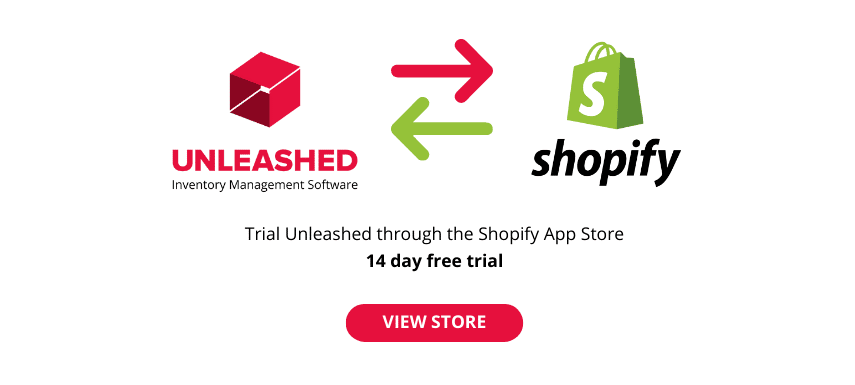
Social commerce is marketing and sales conducted entirely within a social media environment – from product discovery right through to checkout and beyond. With one February 2022 research report valuing it as a US$89.4 billion sector – with an astonishing projected 39% compound annual growth rate (CAGR) – social commerce also represents a major opportunity for many.
But should B2B businesses care?
Certainly for many traditional B2B firms, social commerce will be irrelevant. However for the kind of business that’s successfully pivoted into digital commerce, complete with direct-to-consumer channels – and the kind of integrated eCommerce inventory management needed to power this type of strategy – then social commerce may represent a logical next step.
Here’s everything you need to know about the world of social commerce (but were afraid to ask).
What is social commerce?
Social commerce does what it says on the tin - it is a blend of social media and eCommerce, where users can purchase goods or services directly within their favourite app. It’s also known as social media commerce.
Unlike traditional purchasing funnels, social commerce puts social media down at the conversion phase instead of way up in the awareness phase. Customers can discover, learn about and purchase from a brand all without leaving the app.
According to a Sprout Social report, social commerce is becoming the increasing norm for businesses. 87% of surveyed executives agreed that it’s growing as a major part of their company’s marketing-driven revenue, and is particularly common among mid-market and enterprise-level organisations.
The same report found that 35% of customers – mostly millennials and Gen Z’s – had purchased directly from a social media platform.
 Social commerce purchasing is more common among millennials and Gen Z.
Social commerce purchasing is more common among millennials and Gen Z.
How does social commerce work?
Social commerce works because a number of the biggest platforms on the web - Facebook, Instagram, Pinterest, WeChat - have enabled eCommerce-style shopping carts (or similar features) within their app, allowing brands to set up a whole new digital sales channel contained entirely within the platform.
For example, if you turn on Instagram Shopping, you can create a ‘shop’ on your Instagram profile that users can browse to find products they like, then purchase them.
Because it’s contained within social media, these shops also have a variety of other useful features. For example, liking, commenting, sharing and reviewing are all built into the platform by their very nature, making it easy to share and discuss products with friends and family.
Types of social commerce
- Native social commerce is the big one, and the one we’ve referred to most frequently in this article. It’s the shopping-cart-within-the-app, as described above.
- Peer-to-peer marketplaces are also common, such as Facebook Marketplace. It's where users can sell to each other, although brands are usually welcome on these platforms too.
- Shoppable AR experiences are a particularly interactive way to use social commerce. Here, users can ‘try on’ products virtually using their camera and an augmented reality filter, with product information displayed on-screen, and then click to purchase. Snapchat Shopping Lenses is the primary example here.
- Curated shopping lists are somewhere between eCommerce and social commerce. With this feature, users can create a catalogue of products that they are interested in and - through examples like Pinterest Product Pins - even see price, descriptions and stock availability of the items that they love in-app. However, they still need to click through to product-specific landing pages to make the purchase.
 Augmented Reality for Social Commerce becoming more accessible for businesses.
Augmented Reality for Social Commerce becoming more accessible for businesses.
Social commerce vs eCommerce
While both social commerce and eCommerce are internet-based selling activities, they’re not the same thing.
eCommerce is the process of selling through an owned digital asset, like a website or app. The entire shopping experience can be conducted within this branded asset, but marketing is typically separate.
With social commerce however, it’s important to note that you market and sell through someone else’s digital platform – I.e. one or more of the major social media platforms. In social commerce the purchasing process can be completed entirely within the social platform, which is also capable of marketing the products and facilitating discussion about them.
Social commerce vs social selling
Where social commerce is very customer-led - the customer browses and buys products within their social media app of choice - social selling is more like a traditional sales call … but in social media.
Social selling is the act of finding prospects within social media, building a rapport, and engaging them as potential leads (or at least planting enough of a seed that they choose your brand later when they’re ready to purchase). It’s a type of digital-first networking that many businesses use to replace the old tactic of cold calling.
The pros and cons of social commerce
4 benefits of social commerce
- Reduces purchasing friction: If users can find and purchase their favourite products within the same app, they have fewer clicks to get through to complete their journey. This can reduce purchasing friction and increase sales - decreasing those abandoned cart rates that plague mobile eCommerce sites.
- Gets granular about audience targeting: Social media platforms tend to have a lot more data on their users than most websites, or arguably any websites. These apps know a lot about their users’ likes and dislikes, interests, habits, and so on. This allows brands to get really granular with their targeting, helping them reach the right people with less expense and more accuracy.
- Reaches more customers: With eCommerce, your marketing activities have to encourage people to leave the app that they like and go to your own branded one. That’s not always an easy sell. But if you can sell to users in-app, they’re already where they want to be and this gives you access to a potentially huge number of new customers.
- Builds social proof into the platform: Likes, comments, reviews - we’re all used to looking for these as social proof before we make a purchase. Because these are all contained right next to your products, all the proof your users need is right there in front of them.
 Building trust on social commerce can be easier, as users will review and 'like' your products on the platform
Building trust on social commerce can be easier, as users will review and 'like' your products on the platform
3 challenges of social commerce
- Your audience must already be social-savvy: For some brands, social media just isn’t a good option. Their users aren’t very social media savvy, or maybe they are but they aren’t willing to purchase products through this sales channel. Remember, the vast majority of social commerce users are in Gens Y or Z, according to Sprout. If you’re a brand catering to a different audience, social commerce may be a challenge.
- Each social platform has its own audience: Every app has its own audience, and audiences can be quite varied from platform to platform. This opens up the possibility that you might get the social channel wrong when you invest, meaning you can’t find your audience.
- Competition can be fierce: Like all digital marketing activities, competition for attention can be tricky at the best of times. With social commerce, you’re potentially competing against not just other brands, but people’s own friends and family activity. Each users feed will be full of posts, so yours will need to stand out.
The top social commerce platforms you should consider
Facebook Social Commerce
Facebook’s shopping experience is called Facebook Shop, which allows brands to set up an eCommerce tab within their usual business page. They pick the catalogues they want to display, find some inspiring imagery, and then use Facebook’s typical advertising and organic streams to get the word out.
- Learn more: Facebook Shop
Instagram Social Commerce
Users with a Facebook Shop can also set up their product catalogues within Instagram. This will give you the power to create ‘shoppable posts’, where you can upload highly visual product imagery and users can purchase right there and then - within the post.
- Learn more about Instagram commerce
Snapchat AR Lens
As we described earlier, brands on Snapchat can set up AR filters with product imagery and information so users can virtually try on different items before making a purchasing decision - and share their experience with others in the form of stories (where followers can then click on the same item to learn more). At time of writing this feature is available most conveniently to Shopify users, although anyone can set up their product catalogues with a bit of extra technical know-how.
A catch with Snapchat social commerce is that users must leave the app to make the final purchase.
- Learn more: Snapchat Shoppable Lenses
 ShapChat has moved into social commerce with SnapChat Shopping Lenses.
ShapChat has moved into social commerce with SnapChat Shopping Lenses.
Social Commerce on Pinterest
Pinterest is a hugely powerful visual search engine, and its large user base of excited Pinners are well-known for using the platform to research products to purchase in future. It’s a social media app ready-made for social commerce.
Brands can create shoppable Pins within the app that display product information and link users to a purchasing page. Pinterest will then suggest these Pins to users it thinks will be most interested, perhaps because they are already building a catalogue of similar photos.
- Learn more: Pinterest Product Pins
TikTok Social Commerce
TikTok started trialling its commerce functionality in 2021 and quickly expanded it to everyone. TikTok Shopping is now a fantastic way to highlight your products to this huge community of users via TikTok’s typical short-form video format.
Brands can manually integrate into TikTok Shopping or partner through a variety of popular shopping carts (like Shopify, which was the first to partner with the app) in order to highlight products in-video, with links to instant product details pages.
- Learn more: TikTok World
Social Commerce on WeChat
WeChat is an interesting one, because rather than host its own shopping carts and experience it allows brands to create ‘mini-programs’, which are like mini applications built into the wider WeChat ecosystem. It’s this ecosystem which is one reason WeChat has become so phenomenally successful, as they provide quite a diverse range of experience - including in-app eCommerce.
This way, brands can either open up their own online store within WeChat, or sell their products through someone else’s - whichever better suits your needs.
- Learn more: How to sell on WeChat
12 social commerce tips for beginners
1. Target the right audience.
As we mentioned in our challenges section above, you’ve really got to do your audience research to find the right social channel for your users. Before making any major investment, investigate which users most commonly frequent which channels (you could ask your audience directly about this!) and then use each app’s in-app analytics to further hone in on the right demographics and interests.
You may find that you can actually stop using certain social channels, as you realise they’re not right for you.
2. Ask for reviews
Social proof is highly important when it comes to selling online. People inherently distrust the internet, with no help from all the news stories about scams and hacks. So, social proof is a way to determine if a brand is trustworthy or not - if you’re going to get what you pay for.
When you sell a product, try to ask for a review. You can ask on your social media channels themselves, or if you get someone’s email, send them a follow-up after their product has been delivered nudging them to leave a review.
3. Give detailed advice on your products
Your social channels aren’t just for selling - they’re for content. Use that content platform to be a voice of authority in your particular sector, using different formats (articles, images, videos, etc.) to keep people engaged.
The more people view you as the authority, the more they may be willing to trust you enough to make a purchase.
4. Tailor your content by platform
Try not to use social media to just repeat what you’ve already got on your website. Links to blogs and guides are great, of course, but they aren’t going to be appropriate all the time and may not work at all on certain channels.
Figure out what works best on each channel and hone in on those unique styles. For example, the content you might share on Facebook and TikTok would be totally different, so if you find yourself on both then you probably can’t use the same content strategy across both.
5. Post regularly
Social media apps tend to prefer users that post regularly. Their algorithms love frequency and especially frequency that also gets engagement - it’s a sign that the poster is producing high-quality content.
So, keep up a regular posting schedule so you maintain your audience and perhaps even grow it. This will keep people happy, and the algorithms.
 Even if you're primarily a B2B business, you shouldn't overlook the power of the right influencers in your marketing strategy – especially if you move into social commerce.
Even if you're primarily a B2B business, you shouldn't overlook the power of the right influencers in your marketing strategy – especially if you move into social commerce.
6. Use visuals as much as possible
Visuals are non-optional on most social media channels nowadays, given that they are visual platforms by their very nature. But in some cases, like Facebook, text-based posts are very simple to produce and may seem like the ‘easy option’.
We recommend avoiding them for the most part. In fact, according to this research paper, high-quality and professionally shot pictures consistently lead to higher engagement on platforms like Instagram.
7. Encourage user-generated content
User-generated content (UCG) is extremely powerful. It’s where your own audience starts to create content for you, and is effectively free marketing. Plus, if good UCG goes viral then it can be ludicrously cost-effective when comparing cost versus reach.
A few quick UCG ideas:
● Ask users to post photos and videos about your products - share your favourites to give them more reach, and to delight the original poster.
● Ask permission to repost other people’s content featuring your products on your own channel.
● Host photo and video competitions or challenges.
● Ask for testimonials and reviews (yes - these are UCG too!).
● Create your own hashtags.
8. Connect with celebrities and influencers
Celebrity posts and influencer partnerships are like user-generated content on steroids. The enormous power of these connections are truly staggering - users frequently adore and trust their favourite celebrities and influencers. In fact, many of them follow these individuals specifically for a glimpse into their life, and for recommendations on how to replicate it.
If you can get your products in their hands, suddenly you’re expanding your reach from just your own audience to potential audiences numbering in the hundreds of thousands, even millions. And you don’t need to do the trust building with these new people, as the celebrity will have already done that.
9. Offer personalised options
People generally love it when their products are ‘them’. Allowing a degree of personalisation is therefore a great way to engage users with your brand by allowing them to tailor their own experiences.
So ask yourself, can you set up your products so that users can change materials, styles, colours, and other elements? Are you set up for mass customisation of this nature?
10. Offer exclusive promotions
Want to raise awareness of a particular new channel, or just drive traffic generally? Host offers and promotions exclusively on your social channels to encourage people to get into them.
Remember to advertise these well within the same social platforms, so people can click straight from an ad to a promotion and then buy a product, all without leaving the app.
11. Start small and test as you go
It’s really important that, if you’re new to all of this, you start small and build up. Don’t spend a fortune in time and money trying to do everything at once because you’ve seen the world’s major brands doing it. This is a surefire way to drain the budget without getting any good results.
Start small, as this will allow you to hyper-focus on achieving ROI from just one or two channels. Do your research and act strategically, optimising as you build new analytics data. When you’re feeling confident that your channels are generating good ROI for the business, you can start to expand and repeat the process.
12. Ensure your different platforms are all integrated
Social commerce is a part of the wider omnichannel ecosystem, and it’s vitally important that your ecosystem is seamlessly integrated. That means your social commerce store, physical stores, eCommerce platforms, warehouse, financials and marketing teams are all connected - sharing data and insights in real time.
This is to help you prevent common hiccups such as stocking out by accident. A lot of newcomers to social commerce or eCommerce start selling before they’ve connected their inventory system to each platform, meaning users are able to purchase products that aren’t actually in stock anymore (because someone already bought those products on one of the other platforms). You can imagine how unhappy this can make your customers.
Good inventory management is critical to this endeavour - which you can learn more about at the link below.

